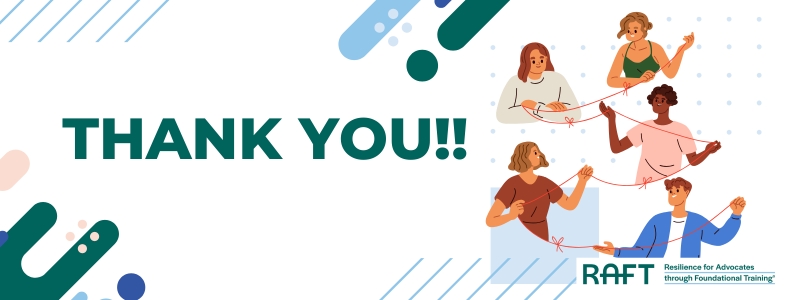Making Community Connections to Support Domestic Violence Survivors
RAFT Team, January 13, 2020
As with all industries, the every-changing nature of shelter work has a predictability. People come, people go, budgets are tight, and staff turnover rates are higher than the norm. Most community members rally when they hear about a need: they just need to hear from you. But when you’re already giving 110% each and every day at work, the thought of adding something new to the list of responsibilities may make you want to roll your eyes. Here’s the thing, just a little extra effort right now will make tomorrow’s load a bit lighter. And that’s a good thing. It takes making community connections to support domestic violence survivors.
Potential Community Partners
Churches
Many churches exist to impact the community. Unfortunately, they often don’t know how to make that happen for domestic violence shelters in the most efficient and effective manner. Consider talking to them about a rotating schedule with your local churches to help once a week or on the weekends. While church members aren’t necessarily trained to handle the rigors of client interaction, they can cook, manage donations, assist in childcare, help maintain the facilities, or help you keep things organized.
Local Colleges
College students often want to give back to their community. Connect with the student activities lead at any local schools and see how they might spread the word. Many times, education majors may even receive practicum credit if they provide activities for children a few times a month. If there’s a culinary arts program, they can plan and serve meals throughout the school year. Psychology students may be able to receive field credit for any volunteer work in your shelter.
Second - Hand Stores

Contact your local consignment and second-hand stores to see if they have items to donate that have not sold or need to be rotated out of their inventory. From clothing to furniture, toys and games to small appliances, linens to decor could all be useful in making your shelter provide needs while also feeling like home. You can even assign a volunteer to manage these potential donations and choose only those things your shelter can use.
Grocery Stores & Restaurants
Grocery stores, restaurants and vendors toss 13 billion pounds of food each year. A report from Harvard found that many of these stores want to donate these unsold items but don’t know the regulations or think they can’t donate certain items. And many fear legal repercussions if someone gets sick from donated food. You can help by educating your local area on the Bill Emerson Good Samaritan Food Donation Act, protects donors who give in good faith. See if there’s a group who would volunteer to pick up food from willing donors.

Local Service Companies
Some of your local businesses may be willing to donate services to your shelter. Talk to yoga studios about a once-a-month class. Accounting firms may be willing to teach budget basics. Medical facilities may offer a free clinic in your facility. Construction companies may help with small remodel jobs.
Individuals Online
Just like you can find a job through LinkedIn and Indeed, people can find volunteer opportunities online. Make sure you’re listed on sites like VolunteerMatch and JustServe. You might be surprised by who shows up, ready to help.
Consider all the things that would benefit your clients and start getting creative about filling those needs. The saying, “Many hands make light work” rings true. Any time you spend getting these things off the ground will be worth the time-savings later. Everyone will benefit far into the future. Meeting needs helps the giver just as much as the receiver. Start contacting people in your community today!







